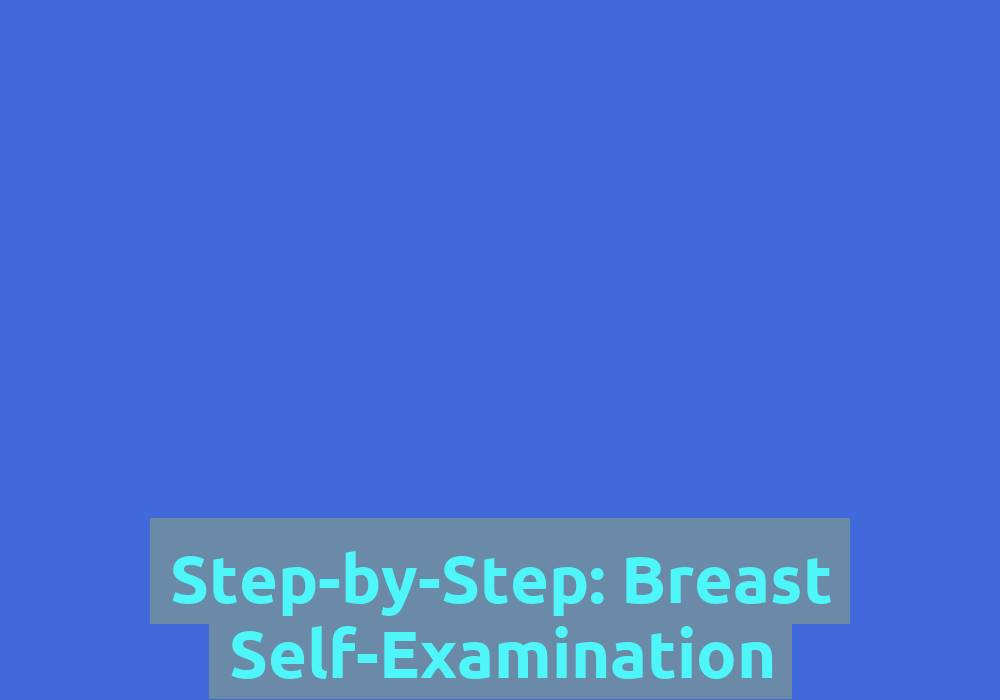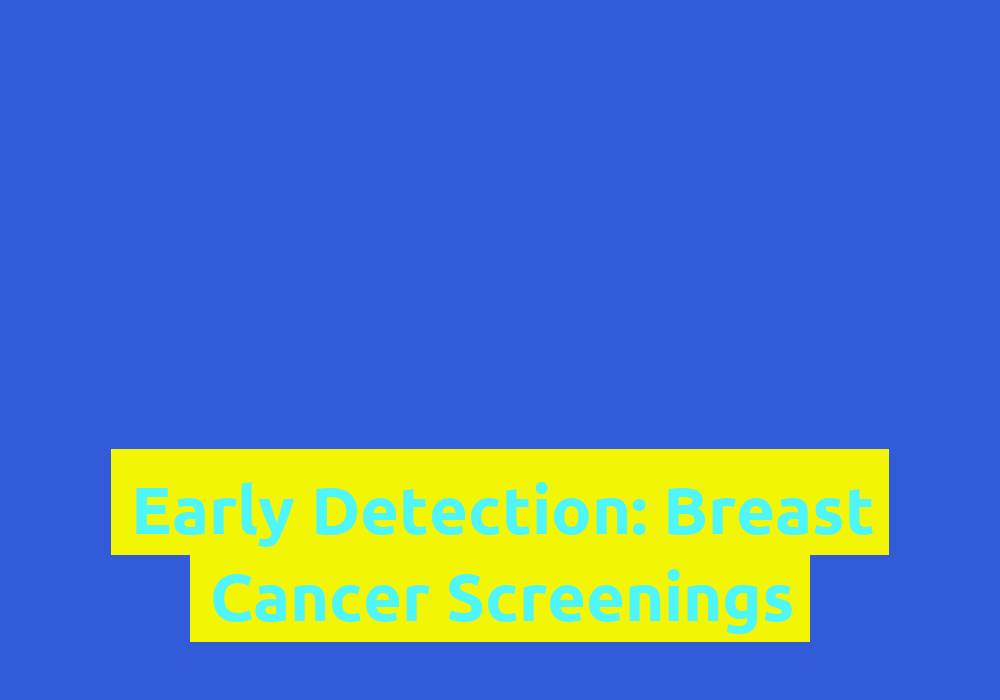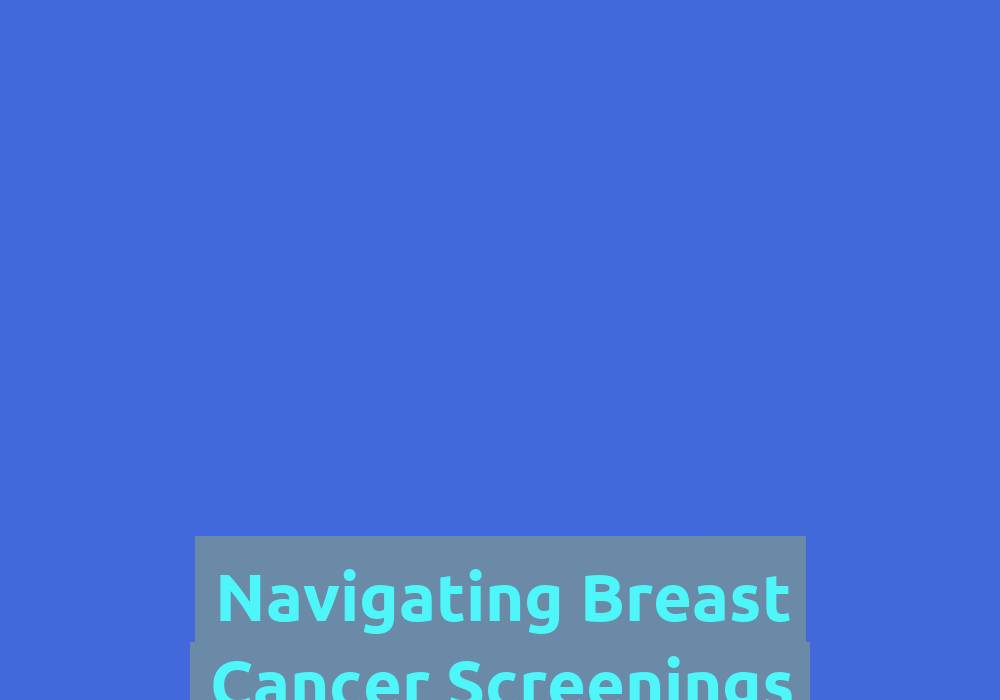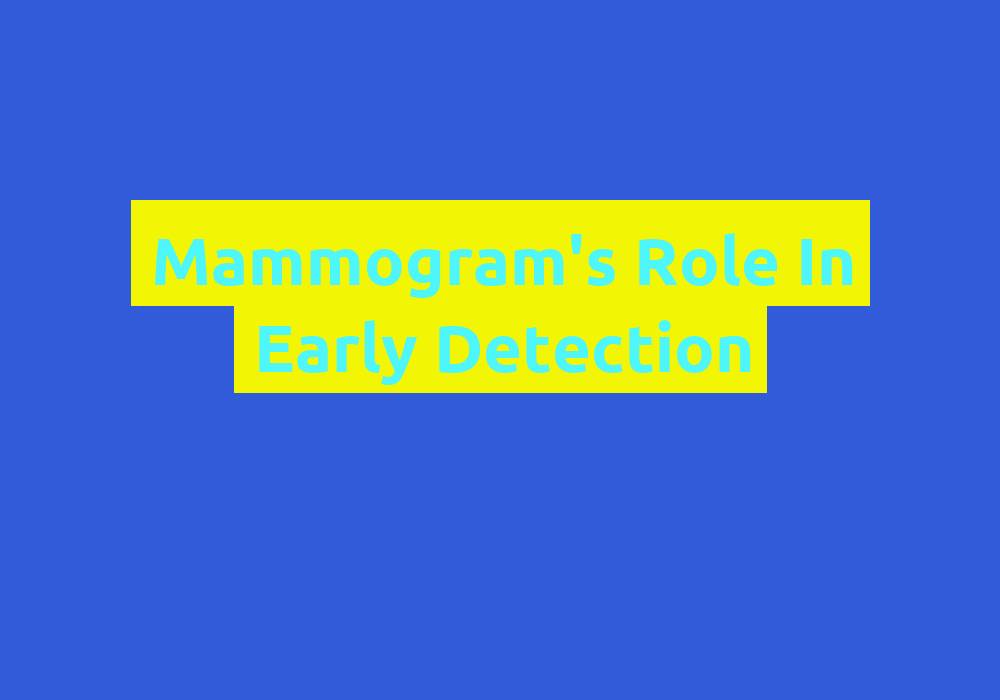Know About Self-Exams and Breast Cancer
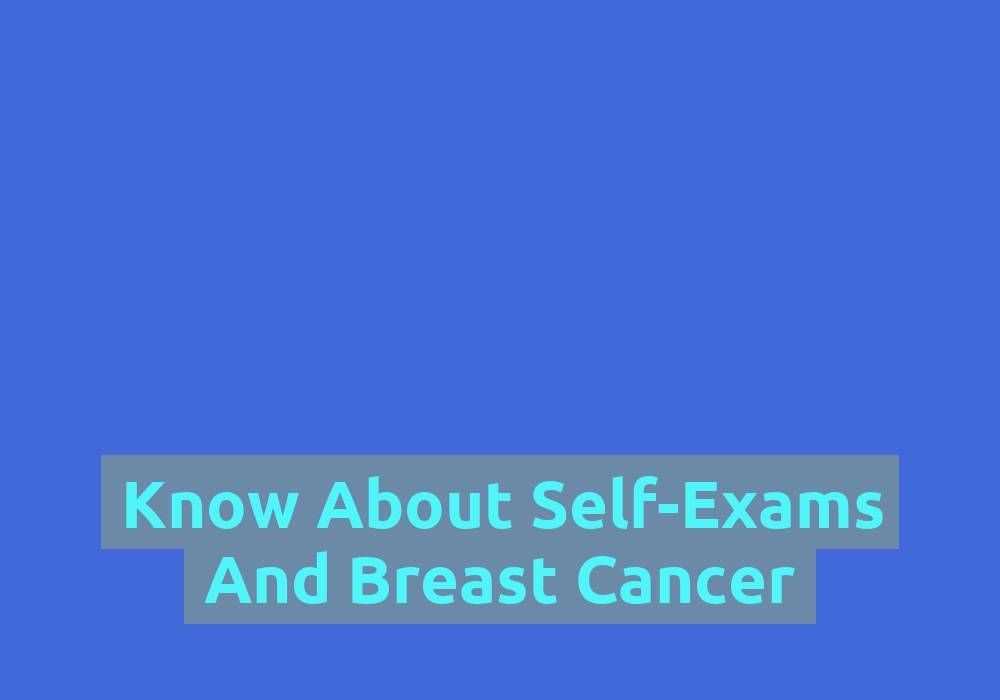
Breast cancer is a significant health concern for women worldwide. According to the World Health Organization (WHO), it is the most common cancer among women, accounting for nearly 25% of all cancer cases. Early detection plays a crucial role in improving survival rates, and one way women can monitor their breast health is through self-exams.
What is a self-exam?
A self-exam, also known as a breast self-examination (BSE) or a breast self-check, is a simple and effective way for women to examine their breasts for any changes or abnormalities. It involves a systematic approach of visually inspecting and palpating the breasts to identify any lumps, swelling, or other signs that may require further medical attention.
Performing self-exams regularly is an important part of breast health awareness. By becoming familiar with the normal look and feel of your breasts, you can quickly identify any changes that may occur. Self-exams are a proactive step that empowers women to take control of their own health.
Why is it important to perform self-exams?
Self-exams are vital because they empower women to become familiar with their own bodies and notice any changes that may indicate the presence of breast cancer or other breast-related issues. By performing regular self-exams, women can detect potential problems earlier, leading to earlier medical interventions and better treatment outcomes.
Early detection of breast cancer is crucial for successful treatment and improved survival rates. Self-exams can help identify any changes in the breasts, such as lumps, swelling, skin changes, or nipple abnormalities, that may require further evaluation by a healthcare professional. By detecting these changes early, women can seek medical attention promptly and increase the chances of successful treatment.
How to perform a self-exam?
Performing a self-exam is a relatively straightforward process that can be done in the comfort of your own home. Here are the steps to follow:
Choose a convenient time: It is recommended to perform a self-exam once a month, ideally a week after your menstrual period ends. If you have reached menopause, you can choose any day of the month.
Get in the right position: Stand in front of a mirror with your upper body exposed. Take note of any visible changes in the size, shape, or appearance of your breasts.
Raise your arms: Raise your arms above your head and observe if there are any changes in your breasts’ appearance. Look for dimpling, puckering, or changes in the contour of the skin.
Inspect your nipples: Look for any signs of discharge or inversion of the nipples. Check for any changes in the color or texture of the nipple area.
Palpate your breasts: Lie down on your back and use your opposite hand to feel your breast in a circular motion. Start from the outer edge and gradually move towards the center, covering the entire breast and armpit area. Pay attention to any lumps, thickening, or areas that feel different from the rest of the breast tissue.
Repeat the process: Perform the same palpation technique while standing or sitting. Some women find it easier to examine their breasts in the shower using a soapy hand to glide over the skin.
By following these steps, you can thoroughly examine your breasts and identify any changes that may require further medical evaluation.
What to look for during a self-exam?
During a self-exam, it’s essential to be aware of the following signs and symptoms that may indicate a potential problem:
Lumps: Any new lump or mass in the breast or armpit area should be carefully evaluated. It’s important to note that not all lumps are cancerous, but it’s crucial to have any new or unusual lumps checked by a healthcare professional.
Swelling: Unexplained swelling or enlargement of one breast or a specific area of the breast should be addressed. This could be a sign of an underlying issue that requires medical attention.
Skin changes: Look for redness, scaliness, or thickening of the skin on the breast or nipple area. These changes may indicate an infection or other breast-related condition that needs to be evaluated by a healthcare professional.
Nipple changes: Be aware of any changes, such as nipple inversion, discharge, or sudden pain. Changes in the appearance or function of the nipples may be a sign of an underlying issue that requires further investigation.
Pain: Persistent breast pain or discomfort that does not fluctuate with the menstrual cycle should be investigated. While breast pain is often not a symptom of breast cancer, it’s essential to have any persistent or concerning pain evaluated by a healthcare professional.
By being aware of these signs and symptoms, you can promptly seek medical attention if you notice any concerning changes during a self-exam.
When to seek medical attention?
If you notice any of the following changes during a self-exam, it is advisable to consult a healthcare professional:
- New lumps or masses that do not disappear after your menstrual period ends.
- Changes in breast size, shape, or appearance.
- Skin changes, such as redness, scaliness, or dimpling.
- Persistent nipple changes, such as discharge, inversion, or sudden pain.
- Unexplained breast pain or discomfort.
Remember, while self-exams are essential in promoting breast health, they should not replace regular clinical examinations and mammograms recommended by healthcare professionals. Self-exams are a valuable addition to routine screenings and can help detect any changes between appointments.
Conclusion
Being proactive about breast health is crucial for every woman. By performing regular self-exams, women can play an active role in detecting any changes or abnormalities that may require medical attention. Early detection of breast cancer significantly improves the chances of successful treatment and survival rates. Stay aware, perform self-exams regularly, and consult a healthcare professional if you notice any concerning changes in your breasts. Your health is in your hands.
Note: This article has been edited and expanded to provide comprehensive information on self-exams and breast health. It is essential to consult a healthcare professional for personalized advice and guidance on breast health.
FAQs
1. What is a self-exam?
A self-exam, also known as a breast self-examination (BSE) or a breast self-check, is a simple and effective way for women to examine their breasts for any changes or abnormalities. It involves visually inspecting and palpating the breasts to identify any lumps, swelling, or other signs that may require further medical attention.
2. Why is it important to perform self-exams?
Performing regular self-exams is important because it empowers women to become familiar with their own bodies and notice any changes that may indicate the presence of breast cancer or other breast-related issues. Early detection of breast cancer leads to earlier medical interventions and better treatment outcomes.
3. How to perform a self-exam?
To perform a self-exam, follow these steps:
- Choose a convenient time, ideally a week after your menstrual period ends.
- Stand in front of a mirror and observe any visible changes in the size, shape, or appearance of your breasts.
- Raise your arms and look for dimpling, puckering, or changes in the contour of the skin.
- Inspect your nipples for any signs of discharge or inversion.
- Lie down on your back and use your opposite hand to palpate your breasts in a circular motion, covering the entire breast and armpit area.
- Repeat the palpation technique while standing or sitting, or in the shower using a soapy hand to glide over the skin.
4. What should I look for during a self-exam?
During a self-exam, be aware of signs and symptoms such as lumps, swelling, skin changes, nipple changes, and persistent pain. Promptly seek medical attention if you notice any concerning changes during a self-exam.
Note: Self-exams should not replace regular clinical examinations and mammograms recommended by healthcare professionals. They are a valuable addition to routine screenings.
